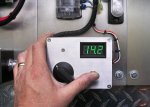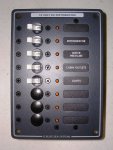patoz
Expedition Leader
I will probably leave my Honda as a gasoline fueled unit also, at least until further down the road. I have an Atwood 12 gal. Marine fuel tank I was going to do the same thing with. The aux tank would have to sit under the generator in the compartment due to width restrictions, so I'm not sure this is a good idea or not.
My biggest reason for switching to propane was for safety reasons. Much easier to carry and store propane in a compartment than gasoline, especially on a hot day. The Honda has a 3.4 gal. internal tank, and when using the Eco Throttle it's supposed to run up to 20 hours. Of course, a larger load will shorten that time.
Also, I just found this on a Honda dealer site...
I hadn't thought about that, but there sure are a lot of conversion kits out there.
My biggest reason for switching to propane was for safety reasons. Much easier to carry and store propane in a compartment than gasoline, especially on a hot day. The Honda has a 3.4 gal. internal tank, and when using the Eco Throttle it's supposed to run up to 20 hours. Of course, a larger load will shorten that time.
Also, I just found this on a Honda dealer site...
More info here: http://www.electricgeneratorsdirect.com/Honda-EU3000ISAC-Portable-Generator/p6554.htmlWe at Power Equipment Direct do not recommend converting your gasoline portable generator to an alternative fuel and doing so will void the manufacturer’s warranty and may cause damage to the generator itself. These conversions are not recommended by any of the generator manufacturers.
Gasoline has an Ignition Point of 475–536 °F. When a generator is manufactured to run solely on gasoline these temperatures are taken into consideration and the engine components are made to handle these temperatures.
Propane (LP) has an Ignition Point of 920-1020°F and Natural Gas (NG) has an Ignition Point of 900–1500°F. These higher temperatures will cause damage over time on any “gas only” powered engine.
I hadn't thought about that, but there sure are a lot of conversion kits out there.









